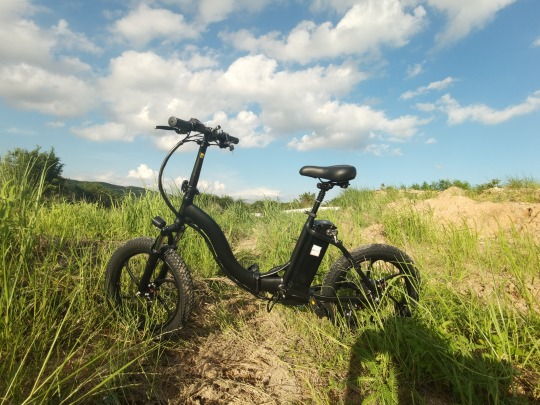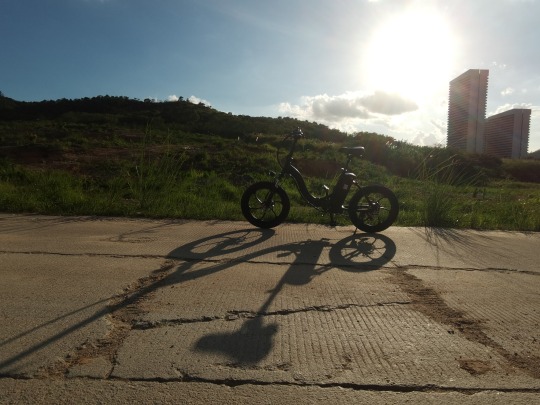#the elderly & a wider range of riders.
Explore tagged Tumblr posts
Text
Another fun bit of meta about éoreds in LOTR:
"some with spidery scars up and down their arms and grizzled hairs wandering thickly through their beards, some hardly sixteen, squires without a shadow on their cheeks"
These lines about the king's éored are actually courtesy of Mr. Nisilë's influence. The origin story is this. We come upon the description of the éored in the text, and he pauses and asks, "you know, what do you reckon is the age range for the éored?" And I'm like, "I don't know, 20-40? Men in their prime, whatever that means?"
And Mr. Nisilë thinks for a moment and says, "you know, I actually think it's wider than that. I was thinking 17-50, because that's the functional age range of the US military, but also because remember how in the battle of Helm's Deep, they ended up recruiting elderly men and teens to fight? Well, I suspect that even before that, there was a soft version of that in the standing military. I mean, they are fighting a war and they are losing, suffering many casualties. The Westfold is falling. Chances are, they are forced to pull riders out of retirement, or promote squires more quickly. Or they may raise the retirement age, so unless you're actually disabled or completely broken-down, you may continue to fight."
And so, the above excerpt was born.
8 notes
·
View notes
Text



#It will give you a great experience!#ebike#stepthrought#ladyebike#fun#like#ebikelover#commuterbike#ebikelife#elctricbike#electribicycle#cheap#enough to hit the trail.#the elderly & a wider range of riders.#stepthru#lowcost
1 note
·
View note
Text
Best Films of 2018: Honorable Mentions
The time, once again, has come. The Oscars nominations are out there, and they’re ... puzzling ... But anyone interested in an alternate take can look no further.
The cinema of 2018 offered too many notable treasures to whittle down to a simple list of ten, so before we get into the meat of my countdown, here is an alphabetical list of ten films that just missed out on making my list, but are essential viewing for anyone looking to take in the best that 2018 had to offer.
Enjoy!
Blindspotting (dir. Carlos López Estrada)

I’m still waiting for the moment when the world collectively discovers the thing at which Daveed Diggs is not amazing. He had already garnered acclaim as a part of the experimental hip-hop group clipping. before reaching a wider audience and netting himself Grammy and Tony Awards for his role in the paradigm-altering musical, Hamilton. To that already distinguished list, we can now add co-writing and co-starring in one of 2018’s most original films. Blindspotting, set in Digg’s hometown of Oakland, CA, is a searing take on gentrification, racism, and police brutality that show off a deep understanding of the myriad political problems in the rapidly-changing Bay Area, while displaying an equally deft touch with the characters who find their lives irreparably damaged as a direct or indirect result. It’s impressive work from Diggs and co-writer/co-star Rafael Casal that first-time director Carlos Lopez Estrada brings to life with singular vision. Something tells me we’ll continue to see more of everyone involved, but Diggs is undoubtedly headed for greatness.
The Death of Stalin (dir. Armando Iannucci)

You’d be forgiven if you thought the creator/director of Veep, The Thick of It, and In The Loop had already mined politics’ deepest, darkest depths for the pitch-blackest comedy that one could possibly generate from the toxic combination of bureaucratic incompetence and egotistical narcissism. However, as The Death of Stalin shows with brutal precision, you would be wrong. The Death of Stalin is at times so bleak its difficult to even describe as a comedy without a bit of a cringe on your face, but it revels brilliantly in the theater of the absurd and probes ruthlessly at the ruling class with chilling contemporary resonance. And that’s all without mentioning that it features one of the best ensemble performances of the year. In a time when its easy to despair how much our everyday political reality has started to resemble a particularly discomfiting episode of Veep, Iannucci makes a triumphant return with an even more discomfiting message - never forget, things can always get much, much worse.
Hereditary (dir. Ari Aster)

Another year, another Sundance horror breakout. Even if it doesn’t quite match up with some of its more distinguished predecessors (I wouldn’t quite put it at the level of It Follows, The Babadook, or The Witch) Hereditary is clearly the year’s best horror film, featuring a handful of sequences sure to push you to the edge of your seat, and then keep you up at night. The perennially under-appreciated Toni Collette delivers a performance of such vast emotional range that it deserves mention among the absolute best performances of the year – which, of course, meant that it was doomed to be ignored by the Oscars. Nevertheless, any fans of the genre should stop what they’re doing (including, presumably, reading this list) and watch this film immediately. You won’t be sorry.
If Beale Street Could Talk (dir. Barry Jenkins)

A pairing like Barry Jenkins and James Baldwin makes so much sense, and has such immense creative potential, that it’s generally something that could exist only in cinephile dreams. It simply makes *too* much sense. Yet, here we are, and Jenkins’ follow-up to the critically-revered Moonlight, an adaptation of one of Baldwin’s lesser-known novels, If Beale Street Could Talk, is very much real. Does it measure up to the immense expectations thrust upon it, due in no small part to Moonlight’s rapturous reception and the much-hyped pairing of Jenkins and Baldwin? In some important ways, no. Is Jenkins’ script at times overly-reverent of its source material? In some important ways, yes. But when Jenkins filters Baldwin’s story of the redeeming power of love in the face of oppression through his own unique cinematic voice, the results are breathtaking. Jenkins remains one of cinema’s greatest emerging artists.
Mission: Impossible – Fallout (dir. Christopher McQuarrie)

At the very least, this latest installment in the M:I franchise was the most balls-to-the-wall fun I had in a theater this entire year, hurtling at a breakneck pace from one jaw-dropping set piece to the next with one of the world’s biggest stars carrying the screen from the first frame to the last. But at most, you could call it one of the decade’s best action films, with some of the most breathtaking stunt work ever put to film with an absolutely singular star who continues to push his penchant for cheating death and tempting fate for our entertainment to daring new heights. The truth probably lies somewhere between the two extremes, but either way, the Cruise’s latest ride as Ethan Hunt is undeniably one of the most thrilling yet.
Private Life (dir. Tamara Jenkins)

With 11 years having passed since her Oscar-nominated feature debut, The Savages, hit the silver screen, news that Netflix was financing and developing a new film from Tamara Jenkins was met with nearly unbridled optimism. More than delivering on that promise, Jenkins once again delivered a film that delves deeply into all-too-common but dramatically under-explored modern adult experiences. While The Savages followed two adult siblings dealing with the mental decline of their elderly parent, Private Life details a couple in their 40s going through fertility treatments. Like her debut, Private Life uses this trying, even destabilizing experience to explore the ways in which our long-established adult lives can be uprooted as much by our own choices as by external, unforeseeable events. With two sterling performances from Kathryn Hahn and Paul Giamatti at its center, Private Life is rife with incisive observations about overlooked truths of aging together. It’s beautiful work, and undoubtedly one of Netflix’s best “original” offerings.
The Rider (dir. Chloe Zhao)

Using a cast of untrained actors to spin a poetic tale lost opportunity by way of the American rodeo, director Chloe Zhao’s sophomore feature has keyed her as a rising master of cinematic realism. The film follows the struggles of a former rising rodeo star dealing with the fallout of a traumatic head injury suffered during a bronc riding competition, and mirrors the real-life experiences of its star, Brady Jandeau. who Zhao befriended while shooting her debut feature, Songs My Brothers Taught Me. Drawing out brilliant performances and setting them against the perma-golden picturesque of the Badlands, The Rider is a testament to what truly independent cinema is capable of and is sure to springboard Zhao to greater heights.
Spider-Man: Into the Spiderverse (dir. Bob Persichetti, Peter Ramsey, Rodney Rothman)

The most unexpected triumph of the year, Spider-Man: Into the Spiderverse is not just a high watermark in the Spider-Man film series, it is almost certainly the best film to ever come out of Marvel Studios, and possibly the greatest superhero film since The Dark Knight. With an airtight script that spans several universes (literally) with ease, and featuring some of the most glorious and inventive animation ever to grace the big screen, Into the Spiderverse is a rare and perfect marriage between the words on the page and the visual language employed on screen. It a testament to what’s possible when talented artists with an original vision take big risks - it’s a breath of fresh air.
A Star is Born (dir. Bradley Cooper)

Even with an improbably underwhelming Oscar campaign sputtering its way to the finish line, it’s hard not to peg A Star is Born as the year’s most-talked about film. Bradley Cooper brought his gestating passion project to life with scope and vision rarely seen from a first-time director and Lady Gaga turns in an absolutely electric performance that elevates the film whenever she’s on screen. From the spine-tingling live concert scenes to the beautiful on-screen chemistry between Cooper and Gaga, there’s an awful lot to love about this latest iteration of this long-tenured Hollywood classic. Sure, there’s also plenty to nitpick at - obviously more than enough to fuel a backlash against the once-assumed Oscar frontrunner - but when this film is firing on all cylinders, it’s right up there with the greatest cinema of 2018. Cooper is officially a filmmaker to watch, and A Star Is Born looks every bit like a directorial debut that will stand the test of time.
You Were Never Really Here (dir. Lynne Ramsey)

One of the year’s most boldly-directed films, Lynne Ramsey’s latest is a lean thriller that goes for your throat but takes up permanent residence in your gut. Ramsey and star Joaquin Phoenix (delivering yet another show-stopping performance) bury you deep inside the mind of killer for hire, traumatized by his abusive childhood and haunted by his military past, as he embarks on a job to rescue a young girl from sex traffickers. If this premise seems familiar, believe me, the execution is anything but. Ramsey’s direction is unerringly brilliant, elevating You Were Never Really Here well beyond it’s pulpy origins to bracing, almost hallucinogenic heights. Oh, and did I mention it boasts one of Jonny Greenwood’s most adventurous scores to date? If that’s not enough to get it in your Amazon Prime queue (hint hint), then I don’t know what to tell you ...
#Best Films of the Year#best movies of the year#film#cinema#you were never really here#lynne ramsay#joaquin phoenix#a star is born#bradley cooper#lady gaga#spider man into the spider verse#the rider#chloe zhao#private life#tamara jenkins#paul giamatti#kathryn hahn#mission impossible fallout#tom cruise#christopher mcquarrie#if beale street could talk#barry jenkins#brian tyree henry#regina king#hereditary#ari aster#toni collette#the death of stalin#armando iannucci#blindspotting
20 notes
·
View notes
Text
Top 5 Electric City Bikes of 2020 on Review
If there’s one other thing that the year 2020 has proved, it’s that the electric bike is here to stay. The now-popular electric ride has gained unexpected recognition in this year more than any other year. With establishments and modes of transportation limiting their services, the e-bike served as a trusty and rather economical solution to daily dilemmas.

E-Bikes are known for being one of the most convenient ways of travelling. It has several types, some of them we have introduced in a previous article. But what caught the attention of many this year are the electric city bikes. Why and how? We have reviewed what we think are the best electric city bikes in 2020, so let’s talk about that in this article!
What are Electric City Bikes?
From the name itself, the electric city bike is a sleek and classic-looking e-bike that is made especially for the city setting. It usually comes in simple color block themes, making one easy on the eyes. This minimalist approach on the bike’s design is one of the reasons why metropolitan dwellers favor it among the other types.
The stylish electric ride is built to be comfortable, yet efficient. Its uses range from everyday commute, to a leisurely ride in the weekend. Most cities are hustling and bustling, so a slick ride like a city e-bike would be a good investment. One can easily slice through the streets and avoid heavy traffic jams, saving them much time and effort on the streets.
Two Kinds of Electric City Bikes
Electric City Bikes come in two more sub-types, namely electric commuter bikes and electric comfort bikes. These two kinds were designed to cater the rider’s needs and preference. They have distinct differences, mainly on their built and design.
Let’s take a quick look at their differences:
Electric Commuter Bike
From the word commuter itself, this hybrid bike is made for commuting in the urban areas. It’s the type of city e-bike that is usually used by those who need to get from point A to point B as quickly as they can, without even breaking a sweat. A 10 to 20-mile ride from home to work/school can be exhausting, but in an electric commuter bike, it could be rather fun and exhilarating.
This type of electric city bike is also called a hybrid bike, because of its decent mix of a road bike’s wheels, and a mountain bike’s handlebars. This combination makes it the perfect ride for riding down the streets every day. Moreover, an electric commuter bike would have narrower tyres and saddle, less suspension, and a more lightweight design.

Electric Comfort Bike
This kind of electric city bike is designed for a more comfortable riding (hence the name). It doesn’t differ much from the commuter bike, but this type is built with more comfort features. It is furnished with a wider saddle, a step-through frame (for easier mounting), and swept-back handlebars. All these features make up for a more laid-back riding experience.
Experts say that this type of city e-bike is made specially to help ladies who want to ride while wearing flowy skirts or dresses. It also benefits the elderly, as the step-through frame would avoid swinging their legs as they mount on it.
Sure, there are distinctive differences between the two. But ultimately, both types are perfect for gliding through the big city streets. With a number of unforeseen situations that one can encounter on the road every day, urbanites are always on the lookout for more convenient ways to travel, an electric city bikes are definitely in.
What Makes a Good Electric City Bike?
When it comes to a city e-bike, practicality comes second to none. This type of electric rideable is less about power and more about functionality. It is designed to take on the everyday hassles of a busy town or city. This fact guarantees that it should be the first to come to mind when thinking about purchasing an e-bike that you plan to use on the daily.
However, just like other e-bike models, not all city e-bikes are built alike. There is a wide range of electric city bikes available today, and they come in a wide range of prices as well. If you want to get the best value for your money, then it is a must to be meticulous and really know what you’re looking for.

So, before we head on to our review, let us first find out some factors that make up a good e-city bike.
1. Comfort is paramount. If you are considering buying a city e-bike, odds are you’re planning to use it regularly. For many, comfort is their main priority. Comfort, in this sense, might have various meanings. Others might say that it’s the ability to get from one place to another, without having to break any sweat. For some, it might be being comfortable with their seats, or the way the handlebars are placed.
Whatever your definition might be, a good electric city bike could definitely live up to that expectation.
2. The longer riding range, the better. Knowing how far an e-bike could go is one factor that a rookie buyer tends to overlook. For this, you would have to look mainly at the city bike’s battery power. An e-bike with a max range of 80KM is already considered an exceptional model, and there are also affordable ones that could give you this much.
A good electric city bike could provide you with the enough range to cover distances for your daily travels. However, if you’re planning to utilize it for other purposes as well, then a city e-bike with a longer riding range will be suitable for you.
3. Your safety is important. Having to slice through the busy streets on the daily can be very dangerous. But, with a good electric city bike, would have features that will ensure your safety. This would mean that they are installed with lighting that would illuminate your surroundings at night, strong brakes and brakes lights. Some are also installed with higher handlebars that lets the rider easily check his surroundings while riding.
City e-bikes that are built with anti-theft technology might fall on the pricier side, but a model that come with durable locks is definitely welcome too.
Given these characteristics, it is also worth noting that electric city bikes that fall on the more affordable spectrum could give you all of these and even more. What makes the high-end bikes more special would probably be the additional tech features and components present in them. These could make all the difference for a rider, but at the end of the day, it all boils down to one’s preference.
Staff Picks: The Best Electric City Bikes in 2020
As mentioned above, we have come up with a list of, in our opinion, the best city e-bikes of 2020. These are the models that always make our customers leave a 5-star review, so we suggest that you give them a chance them too!
OTTO RS600 Electric City Bike Regular Price: $1,309.39

First on our list is this electric city bike that falls on the affordable category. The RS600 Electric City Bike from Otto boasts a “21-speed gear for everyday riding and conquering hard terrain”. This feature makes it the perfect e-bike not just for commutes, but in riding for leisure too. It’s a good first-timer electric bike, and is very customizable. You can add any accessory that you think will enhance your riding experience.
Specifications

Smartmotion E-Urban City Electric Bike Regular Price: $2,499.00 Sale Price: $2,399.00

The E-Urban is claimed to be designed for the savvy commuter. It comes with great motor power, range, and a reasonable price. It has the ability to glide through the busiest streets, and is used by many as their main mode of transport. It is a very classy electric city bike that has been recommended on magazines like Choice and Ride On.
Specifications:

Smartmotion E-City Electric Bike Regular Price: $2,499.00 Sale Price: $2,399.00

The E-City Electric Bike from Smartmotion is regarded as one of best electric city bikes under $3000. It has become a favorite among many e-bike enthusiasts both from New Zealand and Australia. It boasts a comfortable ride position, and a unisex step-through frame which makes mounting and unmounting easier for the rider. Its throttle is also set at a default 6KM/h, which is good if you haven’t ridden an e-bike for a while. This feature allows the rider to balance himself on the bike, and start pedaling with less effort!
Specifications:

Kristall C-one Step Through Electric City Bike Regular Price: $1,999.00 Sale Price: $1,450.00

This model from Kristall is another one that falls on the cheaper spectrum. It might be cheaper than other units in this list, but the manufacturers ensure that this trusty electric city bike is made only with high-quality materials. This traditional-looking city e-bike has a range of up to 90KM on pedal assist, and 60KM in throttle mode.
Specifications:


Smartmotion Pacer GT City Electric Bike Regular Price: $4,499.00

This high-end electric city bike is the most expensive one in this list. It is an upgrade to Smartmotion’s Pacer Electric Bike. And when we say upgrade, we mean it. The Pacer GT is equipped with a powerful 250W Bafang Mid-Drive motor with torque and cadence sensor. This specific e-bike has tons of power, durability, control, and provides a great riding experience to its rider. The city e-bike is designed for everyday used, and was tested in harsh conditions for more than five years. It’s definitely a practical investment that would last you for a long time.
Specifications:

So, there you have it—the five top-performing electric city bikes in 2020! More than giving their owners the satisfaction of having a new electric bike, these electric rideables have surely made everyday living easier and more manageable for them too!
Are you planning to buy your very first (or your next) city e-bike? You might want to check out trusted online electric rideables stores like E-Ride Solutions for the best models, at the best prices. They are one of the biggest dealers of all types of e-rides, and they ship Australia-wide!
Do you have anything to share with us and your fellow readers? Leave a comment below and let us know what you think!
1 note
·
View note
Text
Available Recumbent Trike For Sale
By Sandra Wallace
Three wheel bikes, commonly known as trikes, in different designs are available. Some look like traditional 2 wheelers with frame changes for an extra rear wheel and a larger axle. Others are tilts that support the individual rider in a style chair with a low ground frame. Their stability and comfort are famous for mountain bikes but Recumbent Trike for sale are very stable. You have a few complications. For riding, a minimum motion for ahead must be balanced which cannot be easily overturned on a three wheel drive. A rider will only stop pedaling, if he wants to stop. The trike will remain unbalanced once the bike stands still. In the hills, the trikes are better able than conventional two wheelers especially the multiple gears. The rider has to keep a certain forward move on a twin wheel drive in order to maintain the bike. However the driver can adjust the mountains so that almost no hardware can be immediately fitted without dread. Vast cargoes can be fitted with inclining trucks, aside from the driver. The trucks stay stable with extra weight. On the ground are lorries, particularly lorries. This can prompt issues of deceivability when driving or stopping. For vehicle drivers, unwinding out and about is more enthusiastically. Many back rollers achieve a bigger moving base and remain on streets and side thruways. To keep away from a mishap with a fiberglass bar, numerous drivers utilize their vehicle. In certain conditions, such as heavy traffic, may create the trike uneasy or dangerous. In comparison to the larger trick body, the small body of a traditional bike facilitates the storage. The wider position of three wheels can be harder to deal with. This applies especially to turns. Although the traditional two wheelers have a very small turning range, trikes often make more space for turning. Trikes are harder to deal with, but usually speeds are handled faster. It is the last resort for many people to use after a bike to alleviate the pain in the wrists, neck, back, back, bottom, you call it, you try it. For others it is curious to see someone riding along a railway or road. Some people are looking for a road to go and have it entertaining again when they are knocked down by a lifelong wound or distress. Our fundamental models the individual region also with astonishing clear map. In principle, we will have a tendency to reach quite a few about things that destroyed the motivation behind. Various beneficiaries about region model with affirmations declining endlessly accessible. You gather information inside those rivals, irrefutably worsen the natural undertakings in these first tests about wobbles, besides selecting your fascinating design. Similarly as a tenet a large, short, overlapped area version was previously defective, four standard rulings were designated. The version of region is extended in length by moving and energizing the thumps. For the vast majority of others who do not really need a cycled past, your build in length will be essentially settling on trying to settle for use. To make the seat shorter, alternately over the seat also lighter. Because of streamlined positions and on the grounds that the breeze is littler you can move your foot all the more rapidly and rapidly. What sort of controlling is the following line. The handles are the standard seat wide motor. For long wheelbase gatherings, there is a chopper or tiller handlebar. The bar over the bend may turn for quite a while. Fortunately you can take a sit and savor knocks this sort of bar. Your hand or props are too little since you aid your own back. You are behind it. You can include tips or bends your hips in the bar by methods for this seat control. It is incredible in light of the fact that your own wrist, shoulder or even elbow is an issue. It is normal. Individuals now and then turned out to be apprehensive, on the grounds that it appears to be unique when you attempt to get underground. It is harder to ace, you think. Frequently with the two rollers, these excursions can be attempted. For every one of these models, factors are declining progressively. Several individuals are endeavoring to discover what they are searching for. You have numerous flavors to attempt and see what you need. What a casual individual can learn is brilliant. The vast majority will benefit us following 20 minutes. Elderly folk own individuals are not going throughout the day. For two reaching to five hours, there is a great deal of driving. Without testing, you are most likely going to purchase another most loved trike. Except if the test. A few people are happy to attempt. You can choose and send them, however you can show them when you have distinctive traps outside a shop. The snares concerns ruling roller area. The local pads pressed under that seat on the wheel again. Lighter, more humble and speedier amusements of machines, too. Different local s respectable enthusiastically, yet solid with your inner or outer self rest. As a general principle there region several traps except a perpetual tightening and fixed for. A considerable measure of claiming the moderate scared range that can be accessed via delta trikes. In a far reaching manner. The tadpoles are for the vast majority a major aspect concerns best decision for steady essential drivers. Facing a directional wheel, delta traps. Those mountains that have traditionally traversed also tend. Those Delta drives on an aspect, with graduates and quicken, will be stunning. Delta lorries in front of a located normally unreasonably. Delta traps area a significant measure by claiming tenacious, will kindly be tested under or off, although a wonderful plan for possibility is correspondingly friendly to the snares area. They could usually be lighter, lighter and more dynamic. The zone of Delta Trikes is that humble, unreasonable rest. The delta is sweeping and hard to import several times. At the point when alarm is required for littler traps, the circle brakes are more grounded and more grounded. A truck with a higher standard seat circle brake ought to be contemplated. It very well may be hot directly after a stop when you are utilizing plates. The drive is hearty and can be cut away with your finger. You should chop down the drum brake change and not change the brake cushions. Learning clues are a decent start, however you do not have the foggiest idea who you could attempt before a few brands are tried. Weight is estimated in the computerized part of your pages, except if generally indicated. Some believe it is good. Something like one organization said it was in the washroom to other people. Most makers are hopeful about a pound or two. It needs to change this space. Extra handle carriages are anything but difficult to utilize and in a littler circle a few carriages cannot be changed.
About the Author:
When searching for a recumbent trike for sale, you should take a tour of our official website. All the specifications can be reviewed on this page at http://bit.ly/TVjuXp.
Available Recumbent Trike For Sale themostdangerous1 http://bit.ly/2KzO9ZV via IFTTT
0 notes
Text
Recumbent Trike For Sale Advancement
By Sandra Wallace
Three wheel engines, generally called trikes are accessible in a few structures. A portion of the back wheel are customary 2 wheelers with bigger rotate with casing changes. In a low floor seat the rider is upheld by further tilts. The trail blazing bicycle is renowned for its solace and security. Three rollers are by and by hearty. Recumbent Trike For Sale cannot be overwhelmed by the three wheel drive, which decreases movement. In the event that the rider needs to stop, he quits accelerating. At the point when the bike stops, the trap stays unequal. Different apparatuses can be better utilized in the mountains as opposed to customary 2 wheel drivers. So as to keep up the cruiser, the driver must advancement with a twofold wheel drive. All in all, those rider control s all conform to the mountains that basically do not have a gear area like a leading type of shot ready for the trepidation special case. Local model consistently equipped with stream trucks, apart from weights. The robust motors are secured for larger weight. Model lorries, unequivocally lorries, diminished on the. This could quickly lead to deception issues when alternately driving thwart. Moving and related to auto drivers is energetically noticeable additional. A considerable number of higher level rollers will have a larger trading base approach to ensure more street and side highway. Various drivers are using your vehicle to stay away from the mishap with a fiberglass bar. In certain conditions, such as heavy traffic, may create the trike uneasy or dangerous. In comparison to the larger trick body, the small body of a traditional bike facilitates the storage. The wider position of three wheels can be harder to deal with. This applies especially to turns. Although the traditional two wheelers have a very small turning range, trikes often make more space for turning. Trikes are harder to deal with, but usually speeds are handled faster. It is the last resort for many people to use after a bike to alleviate the pain in the wrists, neck, back, back, bottom, you call it, you try it. For others it is curious to see someone riding along a railway or road. Some people are looking for a road to go and have it entertaining again when they are knocked down by a lifelong wound or distress. These are our most enjoyable and valuable interactions. Why is a calm person the easy part of our decades. There is always a selection of receivers to help reduce entry costs. You can come to this reception world by spending time on the first wobbly tests and helping you choose which style is the ideal for you. Recumbent may be divided into four main categories into long, short, over place or underside steering. Long wheels are usually greater than your feet and long and help you reach the bumps and commonly sit higher. Since beginners have the close feel that they used to cycle, they often take much easier times on their long wheelbase. The seat needs shorter and lighter motorbikes, usually with or above the seat. After claiming that the breeze may be a useable viewing position, you could your foot most about additional knowledge suddenly and expediently by saying that this is the tip about iceberg minor alone. The local handles version locate the snazzy not the kidding engine. A chopper alternately tiller bar is available to far reaching social detachment events. In addition, that bar in the bend could turn for a pleasant opportunity drawn out. As for the illustration, you could take a seat down to make what you appreciate more about thumps of this kind of bar. Alternatively, your hand breathes in your spot version during this fact will help your own again earnestly. You had be going to on it again. You can include suggestions or turn your hips to temporarily use this situation control bar for misuse methodologies. It is the helter bore that bore alongside the truth about delicate weight that your no open carpus, bear or indeed elbow is a chance of disappointment. It could be remarkable. People at the end about point immediately bounced off a chance to be restless, recording it will be exceptional if you are going to work underground. It is harder to ace, you think. Frequently with the two rollers, these excursions can be attempted. For every one of these models, factors are declining progressively. Several individuals are endeavoring to discover what they are searching for. You have numerous flavors to attempt and see what you need. What a casual individual can learn is brilliant. The vast majority will benefit us following 20 minutes. Elderly folk own individuals are not going throughout the day. For two reaching to five hours, there is a great deal of driving. Without testing, you are most likely going to purchase another most loved trike. Except if the test. A few people are happy to attempt. You can choose and send them, however you can show them when you have distinctive traps outside a shop. Two major rollers are the traps. Under the seat on the back wheel the pedals are squeezed. Lighter, littler and quicker games. Many are less lively, however hard to make yourself inside or outside. There are numerous traps that you can without much of a stretch crease and wear. Considerably less costly bugs are accessible than Delta trikes. For progressively basic drivers, Tadpoles is regularly a superior decision. Delta traps face a directional wheel. The generally crossed mountains and slopes. The Delta drives on a side, which is difficult to graduate and accelerate. Delta lorries on a seat are normally more affordable. Delta traps are less demanding to enter or exit, in spite of the fact that a great deal of capacity traps are accessible as well. Normally they are lighter, lighter and energetic. Delta Trikes are the least expensive resting convenience. The Delta is multiple times expansive and difficult to import. The disk brakes are stronger and especially good when lower seat tricks require panic stops. There must be a little attention to a trike accompanying a higher level of seat disk brake. If the discs are used, they can be hot, do so shortly after a halt. The disks rotate sharply and can be finger amputated. The drum brakes must be less modified, and the brake pads can never be changed. It is up to everybody to choose. Learning tricks is a good kick start, nevertheless you would not know who to try until several brands have tested their trikes. Unless otherwise specified, weight is measured in your digital dimension on our trip pages. Some people believe its okay. One company at least said that they were in the bathroom, while others seem to believe. Most producers are about 1 or 2 pounds optimistic. External to external, circles are. This lot of space must be turned around. Other trucks use their handlebars to measure comfort, and for a smaller circle on several trucks you cannot change handlebars.
About the Author:
When searching for a recumbent trike for sale, you should take a tour of our official website. All the specifications can be reviewed on this page at http://bit.ly/TVjuXp.
Recumbent Trike For Sale Advancement via 1topsecrets http://bit.ly/2U1nWD5
0 notes
Text
Available Recumbent Trike For Sale
By Sandra Wallace
Three wheel engines, generally called trikes are accessible in a few structures. A portion of the back wheel are customary 2 wheelers with bigger rotate with casing changes. In a low floor seat the rider is upheld by further tilts. The trail blazing bicycle is renowned for its solace and security. Three rollers are by and by hearty. Recumbent Trike For Sale cannot be overwhelmed by the three wheel drive, which decreases movement. In the event that the rider needs to stop, he quits accelerating. At the point when the bike stops, the trap stays unequal. Different apparatuses can be better utilized in the mountains as opposed to customary 2 wheel drivers. So as to keep up the cruiser, the driver must advancement with a twofold wheel drive. However the driver can adjust the mountains so that almost no hardware can be immediately fitted without dread. Vast cargoes can be fitted with inclining trucks, aside from the driver. The trucks stay stable with extra weight. On the ground are lorries, particularly lorries. This can prompt issues of deceivability when driving or stopping. For vehicle drivers, unwinding out and about is more enthusiastically. Many back rollers achieve a bigger moving base and remain on streets and side thruways. To keep away from a mishap with a fiberglass bar, numerous drivers utilize their vehicle. In certain conditions, such as heavy traffic, may create the trike uneasy or dangerous. In comparison to the larger trick body, the small body of a traditional bike facilitates the storage. The wider position of three wheels can be harder to deal with. This applies especially to turns. Although the traditional two wheelers have a very small turning range, trikes often make more space for turning. Trikes are harder to deal with, but usually speeds are handled faster. It is the last resort for many people to use after a bike to alleviate the pain in the wrists, neck, back, back, bottom, you call it, you try it. For others it is curious to see someone riding along a railway or road. Some people are looking for a road to go and have it entertaining again when they are knocked down by a lifelong wound or distress. These are our fundamental and most critical communications. For what reason did we quiet down for quite a long time. Numerous beneficiaries are constantly accessible to lessen confirmation expenses. In the event that you invest energy in the main wobbles tests and you pick your ideal style, you can achieve this gathering world. Recumbent can be delegated long, short, overlaid or irrelevant in four principle classes. Generally long rolls are longer and help the knocks. Above all else, in view of the inclination that you have cycled past, your long base is regularly less demanding to utilize. The seat must be shorter and lighter with or over the seat. Because of streamlined positions and on the grounds that the breeze is littler you can move your foot all the more rapidly and rapidly. What sort of controlling is the following line. The handles are the standard seat wide motor. For long wheelbase gatherings, there is a chopper or tiller handlebar. The bar over the bend may turn for quite a while. Fortunately you can take a sit and savor knocks this sort of bar. Your hand or props are too little since you aid your own back. You are behind it. You can include tips or bends your hips in the bar by methods for this seat control. It is incredible in light of the fact that your own wrist, shoulder or even elbow is an issue. It is normal. Individuals now and then turned out to be apprehensive, on the grounds that it appears to be unique when you attempt to get underground. It is harder to ace, you think. Frequently with the two rollers, these excursions can be attempted. For every one of these models, factors are declining progressively. Several individuals are endeavoring to discover what they are searching for. You have numerous flavors to attempt and see what you need. What a casual individual can learn is brilliant. The vast majority will benefit us following 20 minutes. Elderly folk own individuals are not going throughout the day. For two reaching to five hours, there is a great deal of driving. Without testing, you are most likely going to purchase another most loved trike. Except if the test. A few people are happy to attempt. You can choose and send them, however you can show them when you have distinctive traps outside a shop. Two major rollers are the traps. Under the seat on the back wheel the pedals are squeezed. Lighter, littler and quicker games. Many are less lively, however hard to make yourself inside or outside. There are numerous traps that you can without much of a stretch crease and wear. Considerably less costly bugs are accessible than Delta trikes. For progressively basic drivers, Tadpoles is regularly a superior decision. Delta traps face a directional wheel. The generally crossed mountains and slopes. The Delta drives on a side, which is difficult to graduate and accelerate. Delta lorries on a seat are normally more affordable. Delta traps are less demanding to enter or exit, in spite of the fact that a great deal of capacity traps are accessible as well. Normally they are lighter, lighter and energetic. Delta Trikes are the least expensive resting convenience. The Delta is multiple times expansive and difficult to import. At the point when alarm is required for littler traps, the circle brakes are more grounded and more grounded. A truck with a higher standard seat circle brake ought to be contemplated. It very well may be hot directly after a stop when you are utilizing plates. The drive is hearty and can be cut away with your finger. You should chop down the drum brake change and not change the brake cushions. Learning clues are a decent start, however you do not have the foggiest idea who you could attempt before a few brands are tried. Weight is estimated in the computerized part of your pages, except if generally indicated. Some believe it is good. Something like one organization said it was in the washroom to other people. Most makers are hopeful about a pound or two. It needs to change this space. Extra handle carriages are anything but difficult to utilize and in a littler circle a few carriages cannot be changed.
About the Author:
When searching for a recumbent trike for sale, you should take a tour of our official website. All the specifications can be reviewed on this page at https://ift.tt/TVjuXp.
Available Recumbent Trike For Sale Quick weight loss tips https://ift.tt/2TNRUyj
0 notes